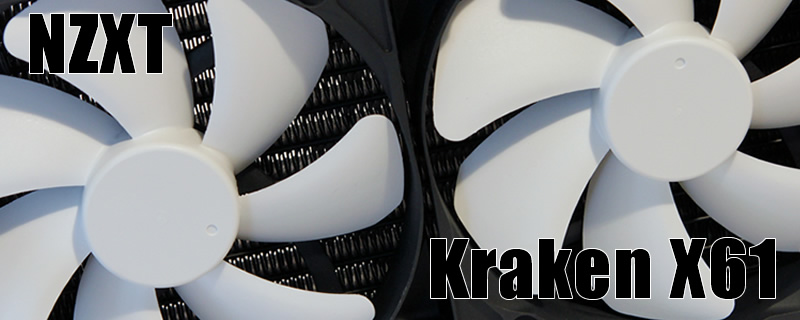NZXT Kraken X61 Review
Conclusion
The Kraken X60 has been King of the OC3D torture test charts for quite some time now, proving itself to be the best performing cooler we’ve yet come across. Indeed in our original review of the X60 back in January 2013 we commented that it was capable of awesome temperatures but was perhaps a little rough around the edges. For this reason we thought the release of the new X61 would simply see NZXT polishing up the original unit, improving the performance and before you know it we’d all be chanting “The King is dead, long live the King”. After all, in the X60 NZXT have already established a strong and firm base on which to launch any required improvements from. Surely it should just be a matter of a few tweaks to get that little bit extra performance. Â
With the above thoughts in our mind and a song in our hearts we got started with the review as always with a quick gander at the Technical Specification. At was at this point though that our falsetto faltered and the grin slipped just a little on our otherwise smiling faces. The problem as we saw it was that to all intents and purposes the X61 appears to have the same rad as the X60. Granted it’s 2mm thicker and looks to have an additional channel, but these are but minor changes and not the sort that we would imagine would bring about significantly different cooling performance. Perhaps then NZXT have changed the fans we thought? Yup, they sure have, they have higher airflow and are fractionally quieter, but worryingly have a lower static pressure rating than the models on the older X60. Still we’ve had a few surprises in the past where specs we don’t expect to achieve greatness totally blow us away so it was onwards and upwards with the review.
So what did we make of it? Well, the X61 is a 280mm based AIO solution from NZXT. At 27mm thick the relatively thin rad, when coupled with 25mm thick, 140mm fans will take up just 52mm in the roof of your case. NZXT provide a generous 400mm of tubing which should also enable you to reach out and touch the front of your case, perhaps if you were installing it linked to a G10 bracket cooling your GPU. The rad comes packaged with two of NZXTs branded white bladed fans but is also able to accept 140mm fans on its other side enabling a push pull set up to be achieved. The Kraken X61 sports the latest iteration of the Asetek pump design which means that it can be speed altered by means of integrated software negating the need for any under-volting shenanigans. Like its predecessor the visible side of the pump head has an illuminated NZXT logo which, by means of the CAM software, can be altered to illuminate via RGB making any colour combination a possibility.
The X61 installed easily into our Cooler Master “Test Trooper” case with the additional tubing making life that little bit easier. Having already tested the X41 we knew we were going to have some fun routing the many cables that originate from the pump head, but were also pretty confident a tidy job could be achieved. In use the X61 was quiet, with the main noise as always coming from the fans as opposed to the pump. Our Max/Extreme settings testing is carried out at the full 12V. At these speeds the fan noise was intrusive but not painfully so and could easily be ignored if gaming or listening to music. Accessing the software and selecting the “Silent” mode slowed the fans down to a point where the noise was not noticeably discernible. Selecting “Silent” mode also reduces the pump speed and therefore noise, but as we’ve already said, the noise from the pump isn’t loud in the first place. Still, as a certain Supermarket says, “Every little helps”.
From a performance perspective the Kraken didn’t actually perform badly as such, just not as well as we as hoped, but perhaps about as well as we had expected given the points we made at the opening of the conclusion. For the most part it hovered around the top spot, never quite making it into the prime position, but beating the older X60 by a small margin in both the 4.0GHz and 4.4GHz tests. Sadly when it came to the extremely demanding 4.6GHz test the X61 was relegated to 4th, behind not only the class leading X60, but also the Nepton 280L and the smaller 240mm rad based H105, the latter two of which can be had for a good £20 less than the X61s £110 price tag. From a price standpoint, the X61 compares a bit more favourably with the X60 as it can be had for a tenner or so less, but then aside from a variable speed pump and marginally quieter fans it has little more to offer, and that’s assuming you can ignore the fact that the X60 dominates it at the high end of heat loading.
It’s not often we reach the end of a review feeling a bit let down and disappointed. We were really expecting much more from the X61 than it was able to deliver. In producing the X61 NZXT have invariably succeed in polishing off the rough edges of the X60. Regrettably though with the best intentions in the world, NZXT have ultimately robbed it of the performance we crave. The King lives on to fight another day.Â
You can discuss the NZXT Kraken X61 Review in the OC3D Forums.




